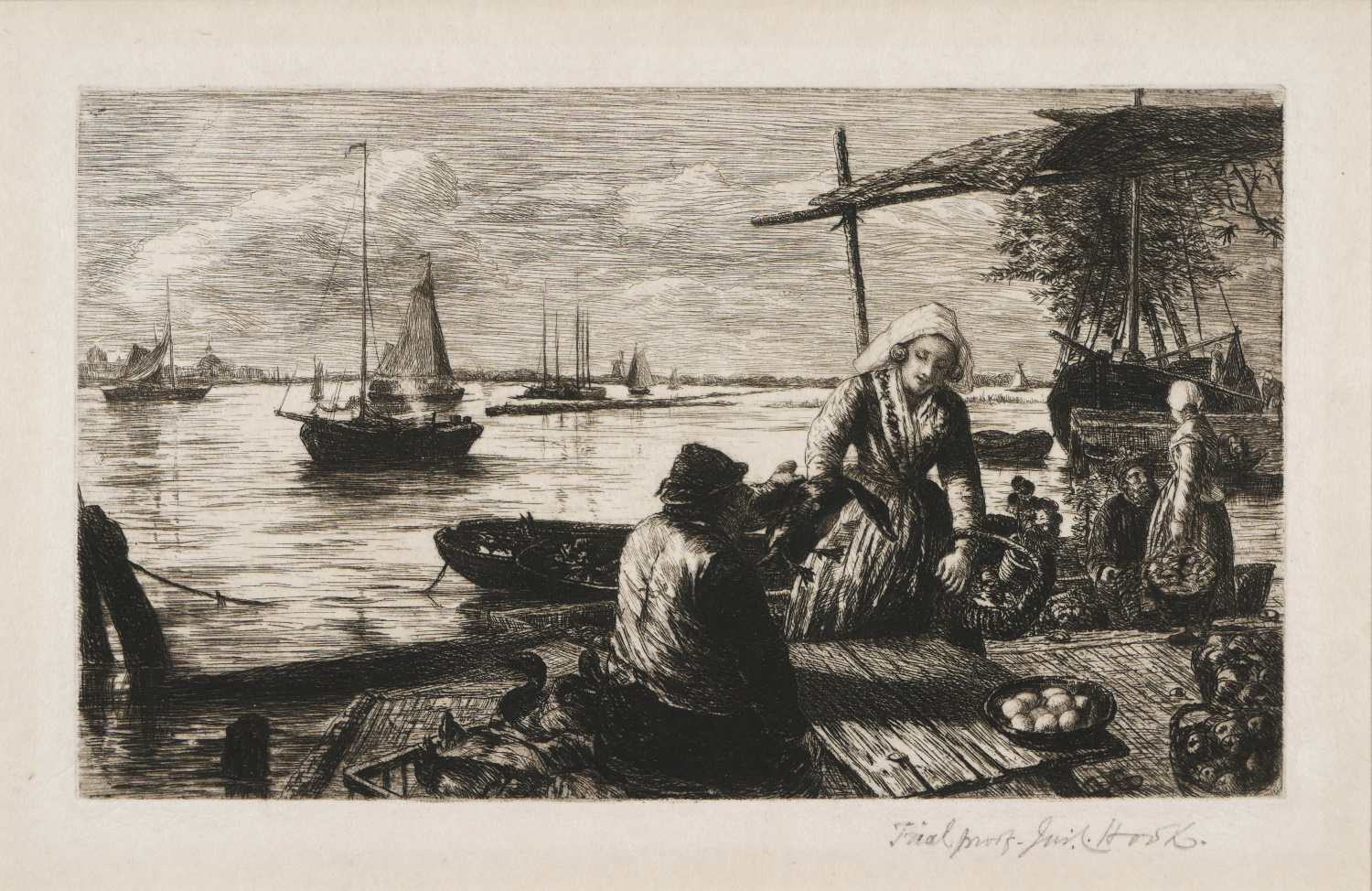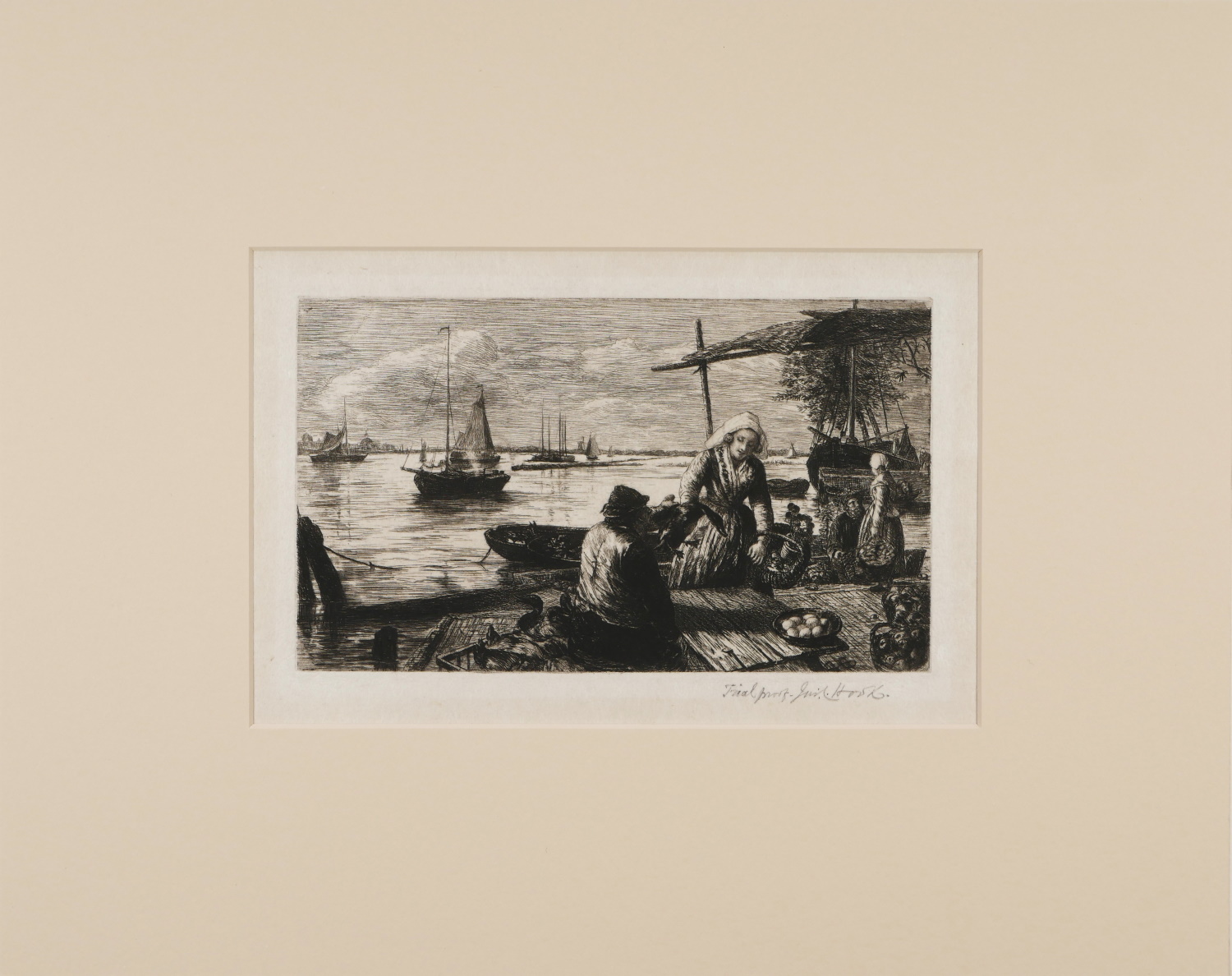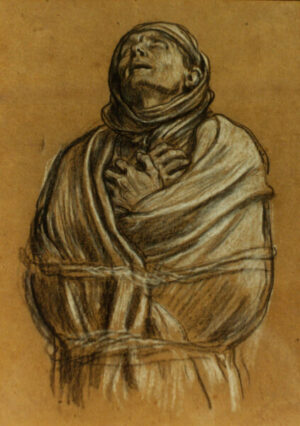Description
The artist’s trial proofs are rare and are generally not signed. They are a pre-cursor to a limited proof edition, these initial prints are pulled so that the artist may examine, refine and perfect the prints to a desired final state.
According to the Print-sellers’ Association the print was published by Edward S. Palmer as an artist’s proof of 100 in 1875 at a cost of 2gns. There was a further unlimited edition of prints (unsigned) at 1gn. Usually another etcher would be employed to create a print of a painting but in this case Hook completed both painting and etchings himself.
This coastal scene, typical of Hook’s paintings and etchings, depicts a market boat in Holland where a woman buys a duck from the stall holder. Hook began the painting Brimming Holland in July 1869 during a stay at the Hotel Bellevue in Dort in the Netherlands. He exhibited the painting at the May 1870 exhibition of the Royal Academy. For more information see Rosalie Hook, Woman Behind the Painter: Diaries of Rosalie, Mrs James Clarke Hook (ed. Juliet McMaster). Edmonton, University of Alberta Press, 2006.





